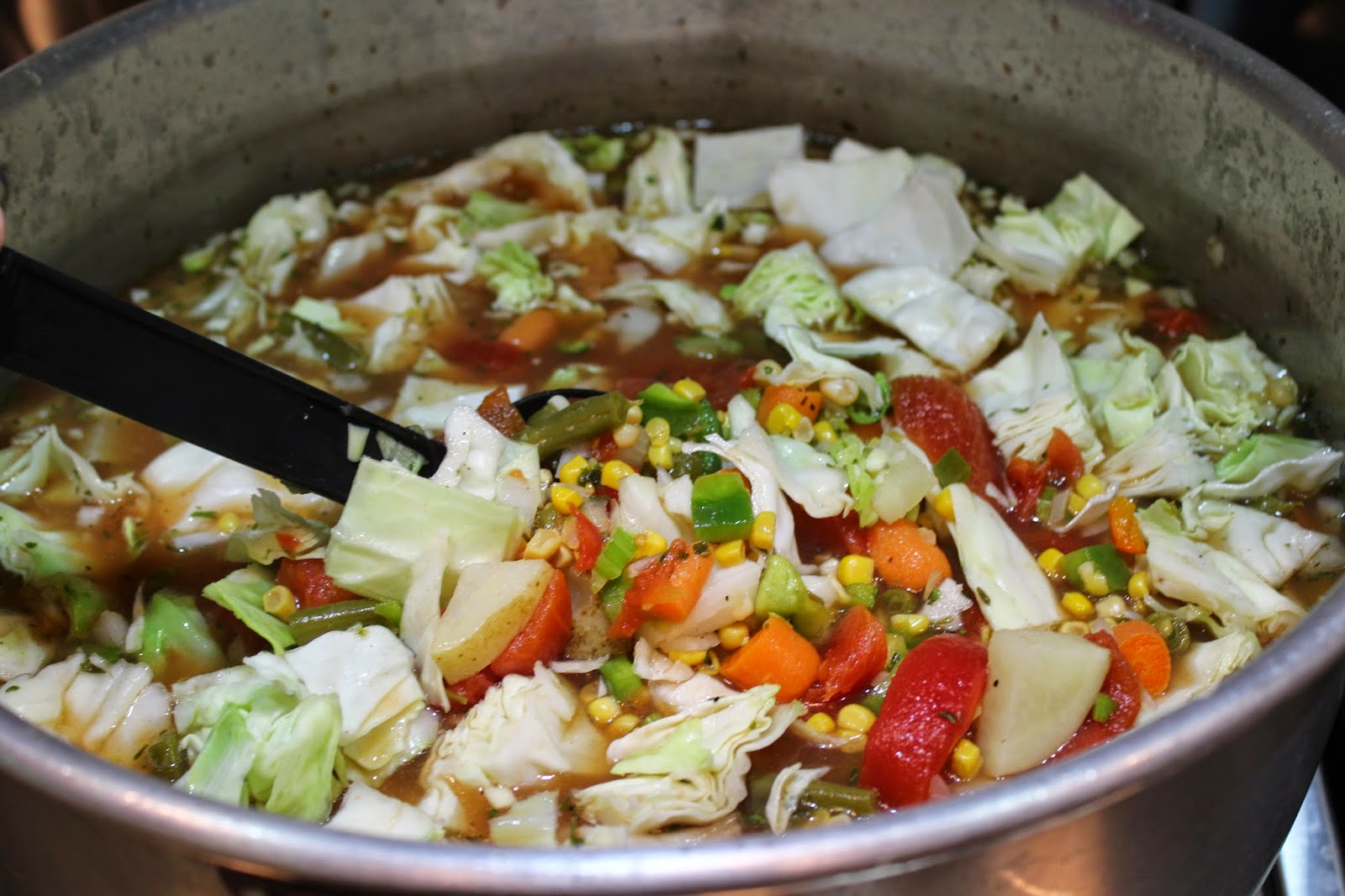This soup can be made with garden or farm market fresh vegetables, vegetables you canned during summer months, leftovers or store purchased.
Making a large pot of soup at
one time leaves enough leftovers to heat up on a cold snowy day when you are
short on time.
Canning the soup will be even handier to quickly heat and serve for a quick meal after a day playing in the snow or hiking.
Canning the soup will be even handier to quickly heat and serve for a quick meal after a day playing in the snow or hiking.
Tip:
Here’s a great tip a friend gave me. Anytime you have leftover vegetables from a meal, simply store them in a Ziploc freezer bag. Keep adding different leftover vegetables until you have enough to make a pot of vegetable soup!
Here’s a great tip a friend gave me. Anytime you have leftover vegetables from a meal, simply store them in a Ziploc freezer bag. Keep adding different leftover vegetables until you have enough to make a pot of vegetable soup!
And don’t be afraid to add
different types of vegetables like squash, cabbage, peas or lima beans. Each will add their own distinct flavor to
the soup.
 |
| I used last years canned vegetables and fresh for my soup |
Soup History in America
In America ,
the first colonial cookbook was published by William Parks in Williamsburg , Virginia
A 1772 cookbook, The Frugal Housewife, contained an entire chapter on the topic. English cooking dominated early colonial cooking; but as new immigrants arrived from other countries, other national soups gained popularity. In particular, German immigrants living inPennsylvania
In 1794, Jean Baptiste Gilbert Payplat dis Julien, a refugee from the French Revolution, opened an eating establishment inBoston
A 1772 cookbook, The Frugal Housewife, contained an entire chapter on the topic. English cooking dominated early colonial cooking; but as new immigrants arrived from other countries, other national soups gained popularity. In particular, German immigrants living in
In 1794, Jean Baptiste Gilbert Payplat dis Julien, a refugee from the French Revolution, opened an eating establishment in
~ ~ ~ ~ ~ ~ ~ ~ ~ ~ ~ ~~ ~ ~ ~ ~ ~~ ~ ~ ~ ~ ~~ ~ ~ ~ ~ ~
Vegetable Soup Recipe
8 cups (2 quarts) chopped,
peeled, cored tomatoes
6 cups cubed and peeled potatoes
(about 6 medium)
6 cups 3/4-inch sliced
carrots (about 12 medium)
4 cups green beans (1 quart)
(or lima beans)
4 cups uncooked corn kernels
(about 9 ears)
2 cups 1-inch sliced celery
(about 4 stalks)
2 to 3 green bell peppers,
chopped
2 cups chopped onions (about
2 medium)
1 head cabbage, diced medium
pieces
6 cups water or use ½ Chicken
stock
A little diced garlic
Salt and pepper or other
spices such as thyme or parsley (optional)
Directions:
Combine all vegetables in a
large saucepot.
 |
| Add all the vegetables into a large stock pot |
Add water. Bring to a boil. Reduce heat and simmer 1 to 2 hours
or until all vegetables are cooked. Season with salt and pepper or other seasonings, if desired.
Serve with a grilled cheese
sandwich, crackers or warm homemade bread.
Leftovers can be frozen in
serving size containers for a quick meal on another day.
 |
| Soup cooked and ready to eat! |
Canning The Soup
Makes about 7 quarts
You Will Need:
7 quart or 14 pint glass
preserving jars with lids and bands
Ladle and other canning tools
Pressure canner
Prepare pressure canner
according to the instructions that came with it.
Wash and sterilize the
canning jars. Heat jars and lids in simmering water until ready for use. Do not
boil. Set bands aside.
Combine all vegetables in a
large saucepot. Add water. Bring to a boil. Reduce heat and simmer 5 minutes.
Season with salt and pepper, if desired.
 |
| Adding cabbage to vegetable soup is wonderful! |
Ladle hot soup into hot canning
jars leaving a 1 inch headspace.
 |
| Fill jars leaving a 1 inch headspace |
Remove air bubbles.
 |
| Remove air bubbles |
Wipe jar rim. Apply lid on jar then apply band and adjust until fit is fingertip tight. (turn until you meet resistance)
 |
| Apply two piece lid |
Process filled jars in a pressure
canner at 10 pounds pressure 55 minutes for pints or 1 hour and 25
minutes for quarts, adjusting for altitude. Remove jars from canner and cool. Do not disturb, checking lids
for seal after 24 hours. Lid should not flex up and down when center is
pressed.
Store in a cool dark pantry
or storage area. |
| Yum! |
We woke up to inches of snow this early November morning. Although it's a beautiful sight it underscores the predictions of a cold long winter ahead this year!
Elizabeth
 |
| Nothing better than hot soup on a cold day |

MMMMMMmmmm ....... I absolutely love the Ohio Blog posts , A wonderful surprise.
ReplyDeletethank you! Jennie
Thanks for stopping by Jennie!
ReplyDeleteI was just looking at the sausage kale soup, then found this one. I saved the recipes to make this fall! But I might not be able to wait.
ReplyDeleteIt's been really rainy, thunderstorms and over cast on and off for weeks in our area of Ohio so we have been making soup. Not our typical summer food I can tell you! Thanks for stopping by my blog!
ReplyDelete